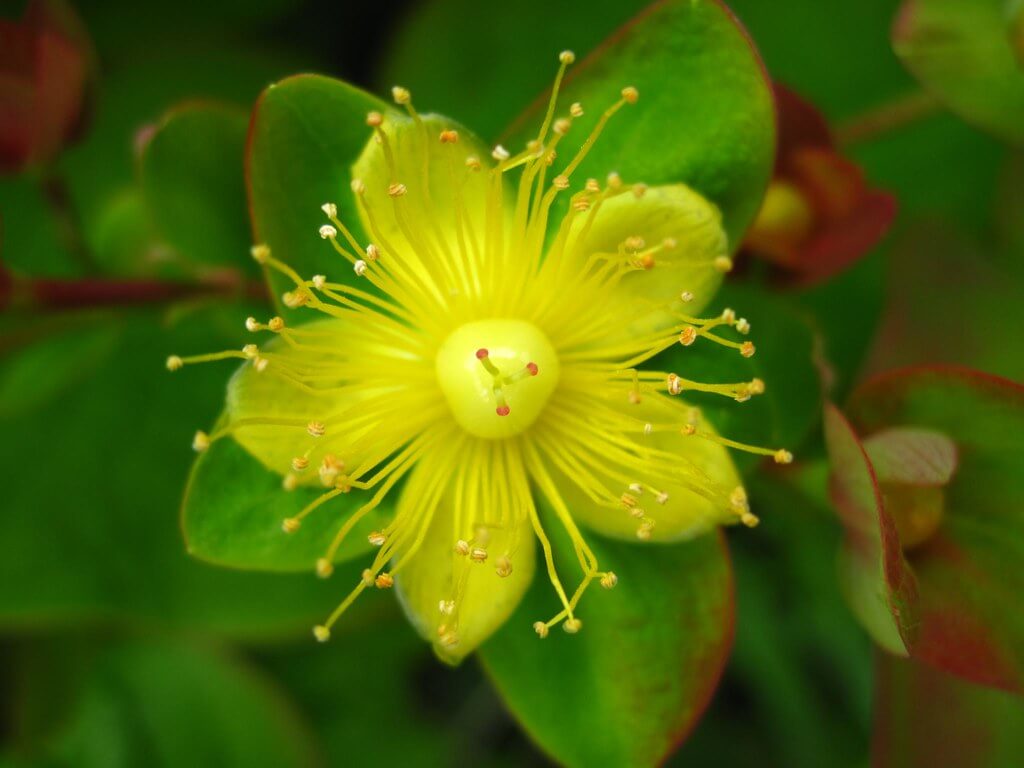Australian Plant Census (2011) available at: Vascular Plants APNI (biodiversity.org.au)
Australian National Herbarium (2008). Records from the ANHSIR specimen database
Australia's Virtual Herbarium (AVH) (2008). Council of Heads of Australian Herbaria (CHAH). Available at: Home - AVH (chah.org.au)
Brookes, M. and Barley, R. (1992). Plants listed in nursery catalogues in Victoria 1885 - 1889. Ornamental Plant Collections Association Inc., South Yarra, Victoria.
Chapple, G. (2008). National Herbarium of New South Wales. Personal communication.
Flower Council of Holland (2001). Amazing Sales Figures For Hypericum.
Gardening EU(undated). Hypericum X inodorum Elstead.
Guinochet, M. and deVilmoria, R. (1982). Flora De France Volume 4. Centre National De La recherché Scientifique, Paris.
Muyt, A. (2001). Bush Invaders of South-East Australia. RG and FJ Richardson, Meredith, Victoria pp. 185-186.
National Herbarium of Victoria (2008a). Royal Botanic Gardens, Melbourne, MELISR database.
National Herbarium of Victoria (2008b). Specimen label information. Data provided by the Royal Botanic Gardens Board, Melbourne.
Parsons, W.T. & Cuthbertson, E.C. (1992). Noxious Weeds of Australia. Melbourne, Inkata Press.
Reid, J.C. (2008). National Herbarium of Victoria, Melbourne. Personal observation.
Robson, N.K.B. (1985). Studies in the genus Hypericum L. (Guttiferae). Bulletin of the British Museum (Natural History) 12:4, 304-307.
Stace, C. (1997). New Flora of the British Isles. Second Edition. Cambridge University Press, Cambridge, U.K.
Stajsic, V. (2008). National Herbarium of Victoria, Melbourne. Personal communication.
Tasmanian Herbarium (2008).Records from the Vascular Plant Data Base. Tutin, T.G., Heywood, V.H., Burges, N.A., Moore, D.M., Valentine, D.H., Walters, S.M. and Webb, D.A. (1968) (eds). Flora Europaea Volume 2. Cambridge University Press, London.
Walsh, N.G. (1996). Clusiaceae in N.G. Walsh & T.J. Entwisle (Eds), Flora of Victoria Volume 3. Inkata Press, Melbourne.
Walsh, N.G. (2008). National Herbarium of Victoria, Melbourne. Personal communication.
Webb, C.J., Sykes, W.R., and Garnock-Jones, P.J. (1988). Flora of New Zealand Volume 4: Naturalised Pteridophytes, Gymnosperms, Dicotyledons. Botany Division, D.S.I.R., Christchurch, New Zealand. Willis, J.H. (1972). A Handbook to Plants in Victoria Volume 2. Melbourne University Press, Carlton, Victoria.

















